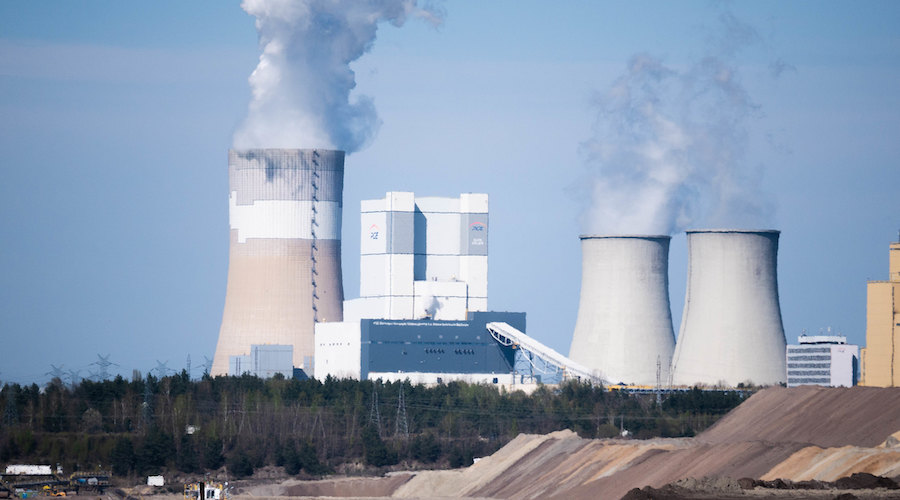Staff Writer | March 27, 2023 |

PGE Bełchatów power plant and coal mine in Poland. (Reference image by Roman Ranniew, Flickr.)
An international team of researchers analyzed the effectiveness of combining swirl flow and air staging technologies for improving combustion performance in and reducing pollution from coal-fired power plants.

In a paper published in the journal Energy, the scientists explain that the exhaust tube vortex (ETV) structure accompanying the swirl flow improves flame stability and combustion performance, but has the disadvantage of generating a large amount of NOx emissions. In contrast, air staging technology creates a fuel-rich environment in the primary combustion zone, which has a positive effect on NOx reduction but negatively affects combustion performance.
“Therefore, if these two technologies are appropriately combined and applied in real life, a synergistic effect that reduces the emission of air pollutants as well as improves combustion performance can be expected,” lead researcher Gyungmin Choi of Pusan National University, Korea said in a media statement.
Choi and his colleagues employed both simulations and experiments to study the combined effects of different swirl configurations and air staging within a 16-kWth retrofitted down-fired pulverized coal boiler.
The coal boiler was composed of three sections: the swirl burner, the boiler, and the exhaust pipe. For staged combustion, staged air was divided into two sides and injected tangentially into the boiler. Liquified petroleum (LPG) gas was used for preheating and flame stabilization. The staged-air and LPG flow rates were regulated, and for each setting, the temperature was measured using thermocouples. Additionally, the amount of gas-phase species was measured using a multi-gas analyzer.
Air staging with two swirl configurations, namely co-swirling and counter-swirling flames, was evaluated to understand which of these is more beneficial in terms of reducing pollutant emissions. In the case of the co-swirling burner, where the air and fuel circulated in the same sense, the coal particles were evenly distributed owing to the formation of the inner circulation zone and the ETV–two vital features for optimizing the design of coal-fired boilers.
Further, the team observed an even burnout zone for the co-swirling configuration, which ensured complete combustion of the fuel, reducing the gas species emissions. It also facilitated an increased conversion of chemical energy into thermal energy, boosting combustion efficiency. In contrast, counter-swirling burners showed uneven coal particle distribution, uneven burnout, and increased NOx emissions, suggesting that a co-swirling configuration was the better option. Additionally, the team showed that air staging technology drove the environmental costs from $0.003 to $0.015 per day.
In the researchers’ view, the insights from this study could prove to be extremely valuable in solving the environmental problems and health hazards related to coal-fired power plants.
“We have identified and studied the structure and flame of the ETV for the first time, and will continue researching and striving to utilize it in the combustion-based industry,” Choi said.
No comments:
Post a Comment